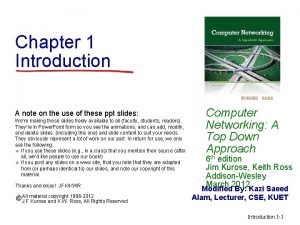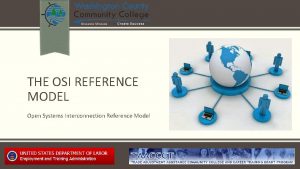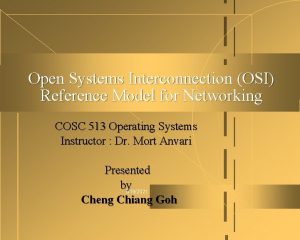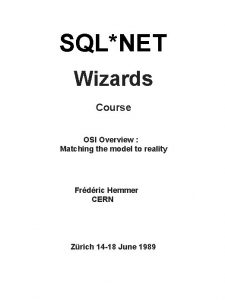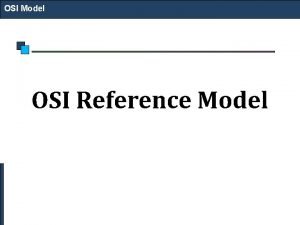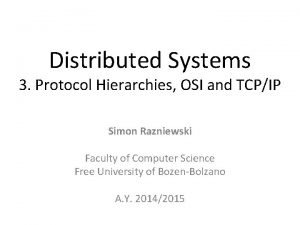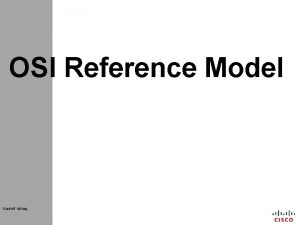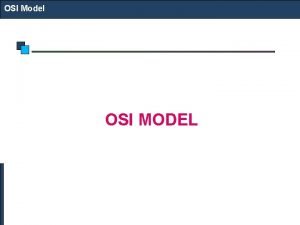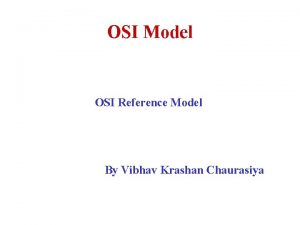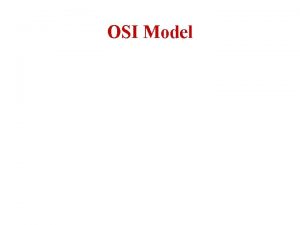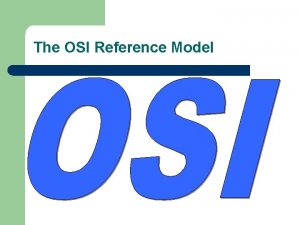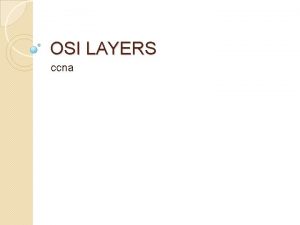Review OSI Model n OSI Reference Model u








- Slides: 8

Review - OSI Model n OSI Reference Model u represents the communications process. u 7 layers: physical, data link, network, transport, session, presentation and application. n Data Encapsulation u PDUs n - bits, frames, packets, segments. TCP/IP Model u 4 layers: Network, Internet, Transport, Application. n TCP/IP Protocol Suite 1

n What does the OSI model represent? u The communications process, how data flows from one computer, thru the network to another computer. n What are protocols? u. A set of rules that define the data format, and how it is transmitted on the network. n What are advantages of a layered model? u Breaks the communications process into simpler steps; standardization; ensure interoperability; facilitates modular enginering and accelerates evolution; simplifies teaching and learning. 2

n What is the function of the physical layer? u Defines electrical, mechanical, and functional specification for the link between systems. (signals and media) n What is the function of the data link layer? u Media access, physical or hardware addressing, network topology - segmentation with bridges and switches. (frames and mac) n What is networking media? u The n cabling, carries the signal in the network. What functions does the network layer provide? u Path selection (routing); logical addressing. 3

n What is data encapsulation? u Adding additional information in the form of headers/trailers to the data. (Information required for communications to occur). n What are functions of the transport layer? u End-to-end connections, reliability, virtual circuits, fault detection and recovery, flow control. (quality of service, reliability) n What are functions of the session layer? u Interhost communications, manages sessions between applications. (dialogues and conversations) 4

n What are functions of the presentation layer? u Data n representation. (common data format) What are some network applications? u Email, n FTP, Telnet, Terminal emulation. What is the data link layer’s PDU? u Frames. n What OSI layer deals with encryption, data compressions? u Presentation layer. 5

n What OSI network layer protocol does TCP/IP use? u IP. n What transport layer protocols are available with TCP/IP? u TCP n and UDP. What’s a major difference between TCP & UDP? u TCP is connection-oriented, reliable; UDP is connectionless, unreliable. n What OSI layers are combined in the TCP/IP network layer? u Physical and Data link layers. 6

n What are the layers of the TCP/IP model? u Network, n Internet, Transport, Application. What PDU does the transport layer use? u Segments. n How many address schemes are required by the OSI model for communications to take place? u Two: logical or network addressing (IP); physical or hardware addressing (MAC). n What layer uses MAC addresses? u Data link layer, layer 2. 7

n What information is placed in the network header? u IP n addresses (source and destination). What is peer-to-peer communications? u Each layer (source) communicates with its corresponding layer (destination) using its own protocol data unit, pdu. n Which model is the historical and technical open standard for the Internet? u TCP/IP reference model (OSI model is the conceptual model). The End 8

